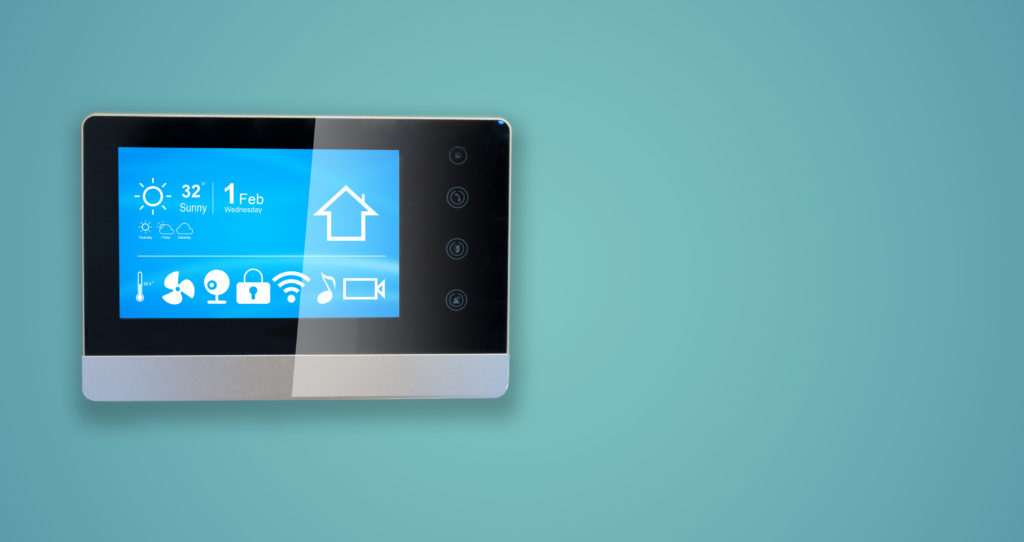
What Is Home Automation?
It’s 6:46 p.m. on Thursday evening and you’re halfway through your hour-long commute. Someone at home just finished off the gallon of milk, and your internet-connected fridge has been waiting for your phone to be in close proximity to a grocery store. It knows that on any given weekday, you open the fridge and reach for the milk gallon 96% of the time between 6-7 a.m., and it also knows that the grocery store in your town closes in fourteen minutes, which is sixteen minutes before you’re due to arrive home. Your fridge sends a push notification to your phone and the GPS reroutes to the nearest grocery store. Now you won’t be eating dry cereal tomorrow morning—crisis averted. This is what the future might look like thanks to the marriage of home automation and smart home technology.
Automation is the implementation of a process, system or technology to complete a given task without the need for human labor. Over many decades, automation has become a core part of how we live our lives at home. Dishwashers, ice makers, washers and dryers are just a few examples, but home automation promises to simplify everything, from how you make your morning coffee, to how you keep your home safe.
What is home automation?
Home automation is the implementation of technology to allow home appliances and infrastructure to independently perform simple and complex tasks and processes without human intervention. Not all forms of home automation can be considered smart home technology, but home automation provides the foundation of the smart home. Smart home technology adds a network and data layer to the equation by allowing appliances and infrastructure to communicate with a central “brain” — often a smart home hub — over the internet.
Everyday examples of home automation
- Appliances: automation is a feature on many appliances, from automatic drip coffee pots to dryers that turn off when they sense that the clothing inside is dry.
- Home utilities: home heating and cooling systems are one early example of home automation. Programmable thermostats allow you to select a target temperature so that the system can turn on and off as necessary to maintain the selected temperature. Many lights are also automated, whether it’s a flood light with a motion sensor that turns on when you pull into your driveway, or a light switch that can sense when the room is empty and turn the light off for you. Home automation also can ensure safety and reduce costs. For example, leak detection devices that use sensor-based technology to alert you when moisture builds up in parts of your home, or that connect to water valves that automatically shut down when there’s a leak.
- Home security: security systems are a great example of home automation technology. Motion-sensing cameras outside of your home can turn themselves on when someone or something enters their field of view, and motion sensors inside your home can trigger an alarm, notify your security company, and contact the authorities if someone’s in your home when they’re not supposed to be.
Advanced home automation
When you put together multiple automated technologies, you start to experience advanced home automation. For example, your home entertainment system may work with an automated lighting system to make the lights dim automatically when you begin playing a movie.
There are even advanced online automation platforms, like If This Then That (IFTTT), a free platform that makes it easy to automate your connected devices and apps. With IFTTT, you could set an internet-connected deadbolt to unlock when you receive a pizza delivery confirmation in your email, or get an emergency call if your connected thermostat detects freezing temperatures.
The only other thing you could ask for is to have these routines program themselves…
Smart home technology takes home automation to the next level
While the advanced home automation routines described above may sound appealing, not everybody has an interest in doing the upfront work of programming devices and tweaking the settings to get them working just right. That’s where smart home technology and smart home hubs come in. These devices collect information about how you live, like when you wake up, or what temperature you prefer when you’re sleeping, and use that data to program your automated devices in the most ideal way.
For example, If you get a smart thermostat and always turn the temperature down when it’s nighttime, over time the thermostat will learn that routine and do it automatically. This is an example of home automation and smart home technology working together:
- Home automation: is the thermostat that turns the heat on and off automatically depending on the set temperature.
- Smart home technology: is the computer in your thermostat or smart home hub that learns about your routines and determines the ideal temperature to set for a given time.
Automation gives us back something that’s really priceless — time. When we spend less time worrying about things around the house, we can spend more time on the things that truly matter.
Read more about how you can automate your home or take a look at some of the tools that can help make it easier.




Join the conversation